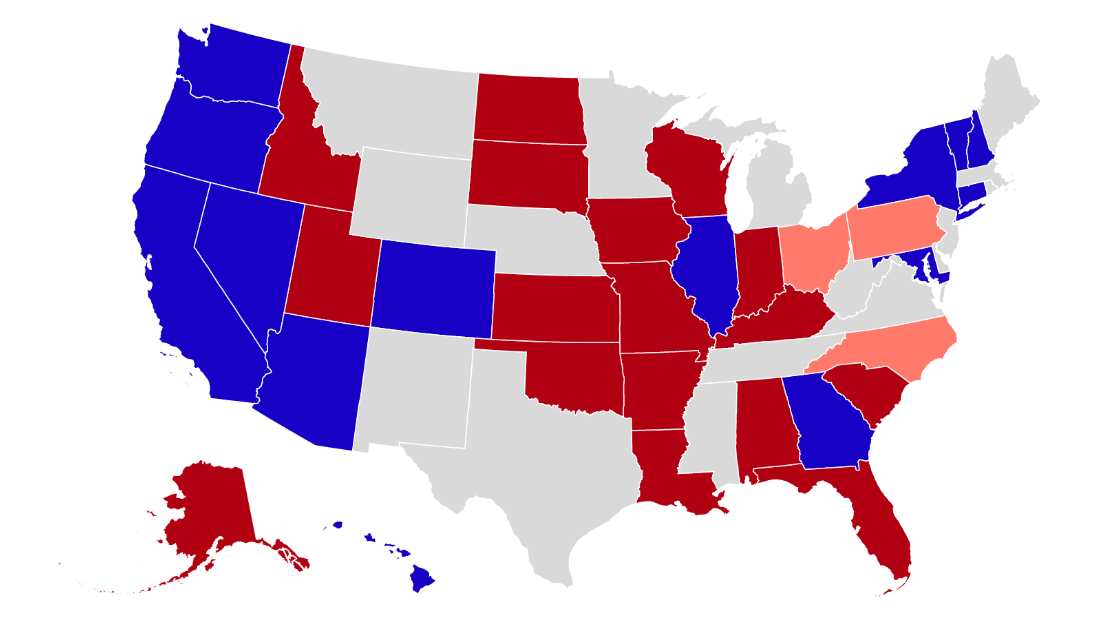
But the truth is that things that happen 478 days before the election, which is exactly how far we are from November 8, 2022, DO matter. (Take that, booers!)
The best way to think about elections -- and Senate races in particular -- is as an iceberg. The part of the iceberg that is above the water is what we see but the massive bulk of the iceberg is below the surface. Most voters only see the last six or eight weeks of a campaign. But before any voter sees what's happening, a whole lot of things have happened under the surface that shape the choice they make.
Decisions get made long before voters are paying attention that function as early indicators of what sort of national political environment we are likely to have come Election Day.
And the biggest and most important of those decisions is whether the party's strongest nominees (or those perceived as the strongest) get into the race. Typically those big gets have more to lose by, well, losing a race than a newcomer who is totally fine taking a flyer on a race -- and in a national environment -- they might not win.
Take 2020. After dropping out of the presidential race and insisting he had no plans to run for Senate, former Colorado Gov. John Hickenlooper (D) changed his mind -- seeing the national winds blowing in his party's favor. Ditto former Gov. Steve Bullock (D) in Montana.
Hickenlooper bet right, winning easily over Sen. Cory Gardner (R). Bullock benefitted from a good year nationally but couldn't overcome the inherent Republican lean of the Last Best Place -- coming up 10 points short against Sen. Steve Daines (R).
While the results were mixed, there's no question that Hickenlooper and Bullock were the two strongest nominees for Democrats in those states. And that they decided to run -- after lots of saying "no" -- because they believed the wind was at their backs in the national political landscape. The political climate effectively recruited them into those races.
Where should you look in this election to see what candidate recruitment is telling us? The most obvious one is in New Hampshire, where Republicans are desperately hoping that Gov. Chris Sununu (R) opts for the race against Sen. Maggie Hassan (D). Sununu said recently that it "really could be until the winter" before he makes a decision.
If Sununu says no, not only will it lessen Republican chances of beating Hassan, but it will also send a signal that the political winds are not favorable for the GOP. While Sununu's decision is the big one, some Republicans hold out hope for a Senate bid by Arizona Gov. Doug Ducey against Sen. Mark Kelly (D) -- believing Ducey has the most appeal to independent voters in the state. (Donald Trump is, um, less of a Ducey fan.)
For Democrats, they landed a big recruit with Rep. Val Demings' candidacy against Florida Sen. Marco Rubio (R). A Senate candidacy by Wisconsin's Lt. Gov. Mandela Barnes would be something of a coup -- and a good sign for how Democratic candidates see the playing field nationally. Same goes for former Gov. Jay Nixon in Missouri.
The Point: What happens in 2021 not only affects what happens in 2022 but also may well predict it.
"here" - Google News
July 20, 2021 at 05:31AM
https://ift.tt/3hPJQZ4
Here's how you can tell who's winning the fight for the Senate - CNN
"here" - Google News
https://ift.tt/2z7PfXP
https://ift.tt/2Yv8ZPx
No comments:
Post a Comment